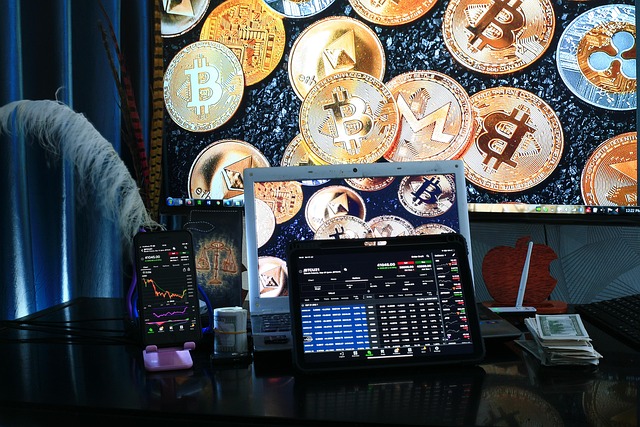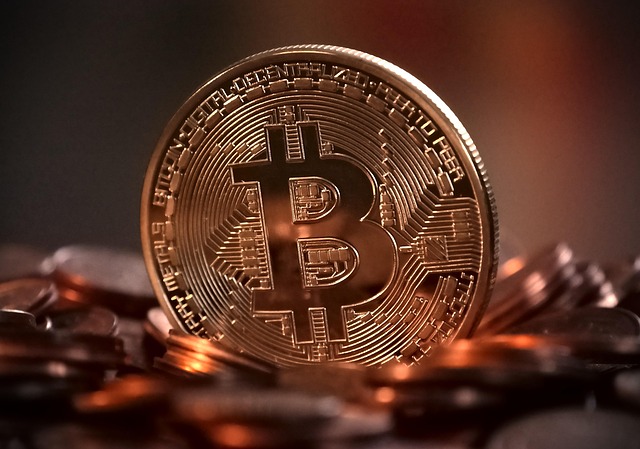DeFi platform KiloEx to compensate users impacted by $7.5M hack
Decentralized exchange (DEX) KiloEx announced that it will compensate traders and stakers affected by a $7.5 million exploit that temporarily shut down the platform earlier in April.In an April 24 announcement, KiloEx said traders who had positions open while the platform was suspended would get full compensation if their losses increased or profits decreased. The platform said it would pay the difference. KiloEx urged traders to close their positions immediately once the platform resumes operations, as delaying could affect their profit and losses, which may then impact the compensation amount. “Please close your position as soon as possible after the platform resumes. Compensation will be calculated based on the platform’s resume time,” KiloEx stated. Source: KiloExStakers’ principal and earnings remain unaffectedFor the platform’s Hybrid Vault stakers, KiloEx said that the stolen funds were fully reinjected into the vault. As a result, staker earnings and principal will remain unaffected. However, KiloEx said it will still provide an additional 10% annual percentage yield (APY) as a bonus for eligible stakers.The bonus APY will be awarded to users who had funds in the vault prior to the platform’s resumption.On April 15, KiloEx offered a 10% bounty to the hacker who stole the funds from the platform. The DEX said that the hacker could keep $750,000 as a white hat bounty if they decide to return 90% of the stolen funds. The platform threatened to expose the hacker’s identity and take legal action if they did not comply. Shortly after, security platforms flagged transactions indicating that the KiloEx hacker returned the stolen funds. On April 18, the DEX said it would withdraw all legal action against the hacker and reward them with a 10% white hat bounty. Related: Mantra OM token crash exposes ‘critical’ liquidity issues in cryptoKiloEx hacker exploited a price oracle vulnerabilityOn April 14, KiloEx suspended its platform after containing the exploit that led to $7.5 million in losses. Security firm PeckShield said the attacker likely exploited a price oracle vulnerability that allowed them to inflate the prices to gain more profit than they should have. In a post-mortem published by KiloEx, the platform confirmed that the attacker exploited a permissionless function. The DEX said the attacker crafted a request that only authorized entities should have been able to do. Using this, the attacker opened a position at an “artificially low price.” This was followed by closing the position at a higher price, providing illegitimate profits to the attacker. Magazine: Ethereum maxis should become ‘assholes’ to win TradFi tokenization race
Alabama drops staking lawsuit against Coinbase
The Alabama Securities Commission, a financial regulator for the US state, dropped its lawsuit against crypto exchange Coinbase, which accused the company of violating securities laws by offering staking services to clients.The regulator cited the ongoing work between the US Securities and Exchange Commission (SEC) and the crypto industry to develop clear crypto regulations as the primary reason for dropping the litigation, according to the April 23 legal filing shared by Coinbase’s chief legal officer, Paul Grewal.The filing read:”The SEC has announced the formation of a new task force to, among other things, provide guidance for the promulgation of rules regarding the regulation of cryptocurrency products and services.””Due to the foregoing, the Commission believes it would be apt to allow policymakers time to consider regulatory constructs,” the filing continued.The Alabama Securities Commission filed its lawsuit against Coinbase in June 2023, alongside state regulators from California, Illinois, Kentucky, Maryland, New Jersey, South Carolina, Vermont, Washington, and Wisconsin.The Alabama Securities Commission dismisses its 2023 lawsuit against Coinbase. Source: Paul GrewalThe Commission’s dropped lawsuit reflects the positive regulatory shift toward cryptocurrencies in the United States as reform at the federal level matriculates into state-level regulatory policy.Related: Oregon targets Coinbase after SEC drops its federal lawsuitUS states drop Coinbase lawsuit but half still holding outFive of the 10 states that filed the litigation against Coinbase for its staking services have dropped their lawsuits.On March 13, Vermont’s Department of Financial Regulation became the first of the 10 state regulators to drop the staking lawsuit against Coinbase.South Carolina’s securities watchdog was the next to drop the 2023 litigation against Coinbase, dismissing the lawsuit on March 28.Grewal announced that Kentucky’s Department of Financial Institutions followed Vermont and South Carolina’s lead on April 1 by also dismissing its Coinbase lawsuit.Despite the domino effect of states rescinding litigation against the crypto exchange, the Coinbase chief legal officer said that more work needs to be done.”Five holdouts are still electing to waste taxpayer resources on lawsuits, and four of those have banned staking with Coinbase, depriving consumers of the right to earn on their platform of choice,” Grewal wrote in an April 23 X post.Magazine: SEC’s U-turn on crypto leaves key questions unanswered
US exchanges bet big on crypto derivatives amid tariff turbulence
United States exchanges are betting big on cryptocurrency derivatives as market turbulence from US President Donald Trump’s looming trade war propels demand for the financial instruments. Since late 2024, exchanges including Coinbase, Robinhood, Kraken, and the Chicago Mercantile Exchange (CME) Group have been listing new types of crypto derivatives and mulling multibillion-dollar acquisitions as they vie for control of the burgeoning market. In April, the stakes became even higher after Trump’s unveiling of sweeping tariff plans sent financial markets into a frenzy and spiked crypto derivatives trading volumes. “Institutional and sophisticated retail traders are increasingly turning to crypto derivatives platforms to navigate macroeconomic risks and uncertainty brought on by escalated tariff policies and global trade tensions,” David Siemer, CEO of asset manager Wave Digital Assets, told Cointelegraph. Consequently, US exchanges are “experiencing record-breaking surges in trading activity and are expanding their investment offerings with the promise of regulatory clarity,” Siemer said. Net open interest in Bitcoin futures rose sharply in April. Source: CoinalyzeRelated: Coinbase launches CFTC-regulated SOL futures in USTrump spikes trading activityCrypto derivatives trading activity took off in 2024 after Trump’s November election victory sent exchange volumes to record highs. In December, Coinbase said trading activity on its derivatives exchange rose by more than 10,000% year-over-year. Similarly, CME Group flagged crypto derivatives as among the exchange’s fastest-growing product segments during its 2024 earnings call. Trump’s tariff plans, announced April 2, further accelerated trading activity. As of April 23, net open interest in Bitcoin (BTC) futures, the most popular crypto derivatives, rose by approximately 30% from the start of the month, according to data from Coinalyze. Futures contracts are standardized agreements to buy or sell an underlying asset at a future date, often using leverage in a bid to enhance returns. Kraken bought NinjaTrader in March. Source: KrakenHeated competitionBurgeoning trading volumes are fueling competition among exchanges. Since February, Coinbase has launched several new crypto derivatives products, including futures contracts tied to altcoins such as Solana (SOL) and XRP (XRP).Meanwhile, Robinhood listed Bitcoin futures — its first crypto derivatives contracts — in February and, in March, CME Group listed its first Solana futures contracts. The CME SOL futures clocked upward of $12 billion in volume during the first day of trading, the exchange told Cointelegraph. Additionally, exchanges are turning to mergers and acquisitions to hasten growth. Coinbase is reportedly in talks to buy crypto derivatives exchange Deribit in a multibillion-dollar bid to expand its footprint in the market segment. In March, US crypto exchange Kraken agreed to buy NinjaTrader, a futures exchange, for $1.5 billion.“The recent wave of tariffs has transformed crypto derivatives exchanges into critical market infrastructure,” Nic Roberts-Huntley, CEO of Web3 developer Blueprint Finance, told Cointelegraph. “While traditional markets faltered under tariff pressures, derivatives platforms have inversely flourished, serving both as speculative venues and protective hedging mechanisms in a fragmenting global trade landscape,” Roberts-Huntley said.Magazine: Trump’s crypto ventures raise conflict of interest, insider trading questions
Forget bull or bear — Bitcoin’s in a new era, says onchain analyst James Check
For years, crypto investors have looked to the four-year cycle, anchored around Bitcoin’s halving events, as a kind of sacred roadmap. The theory goes: Every four years, Bitcoin’s supply is cut in half, triggering a bullish frenzy, followed by a euphoric peak, a brutal crash, and then a slow recovery. Rinse, repeat.But what if that model is starting to break? That is what onchain analyst James Check suggests. In an interview with Cointelegraph, Check said that the tidy frameworks that once defined Bitcoin’s market behavior are no longer as useful in today’s macro-driven, institutionally influenced environment.Rather than labeling the current market as “bull” or “bear,” Check paints a more nuanced picture. Bitcoin, he argues, is now driven more by macroeconomic conditions and investor psychology than by predictable cycles or halving dates. As such, the lines between bull and bear get blurry.“The world doesn’t operate on four-year cycles,” he says. “You can imagine a headline tomorrow where suddenly all these tariffs get pulled back […] and markets start to move. I can just as easily construct a case where the next headline could send all risk assets into a pretty nasty decline.”Check also breaks down why the $70K–$75K range is such a critical confidence zone for the Bitcoin market — and how thinking in terms of scenarios rather than predictions is key for an investor’s long-term success.Check out the full interview on Cointelegraph’s YouTube channel, and don’t forget to subscribe!For years, crypto investors have looked to the four-year cycle—anchored around Bitcoin’s halving events—as a kind of sacred roadmap. The theory goes: every four years, Bitcoin’s supply is cut in half, triggering a bullish frenzy, followed by a euphoric peak, a brutal crash, and then a slow recovery. Rinse, repeat.But what if that model is starting to break?That’s exactly what leading on-chain analyst James Check suggests in our latest interview. In his view, the tidy frameworks that once defined Bitcoin’s market behavior are no longer as useful in today’s macro-driven, institutionally influenced environment.Rather than labeling the current market as “bull” or “bear,” James paints a more nuanced picture. Bitcoin, he argues, is now driven more by macroeconomic conditions and investor psychology than by predictable cycles or halving dates. And in that world, the lines between bull and bear get blurry.“The world doesn’t operate on four-year cycles,” he says. “You can imagine a headline tomorrow where suddenly all these tariffs get pulled back […] and markets start to move. I can just as easily construct a case where the next headline could send all risk assets into a pretty nasty decline.”Check also breaks down why the $70K–$75K range is such a critical confidence zone for the Bitcoin market—and how thinking in terms of scenarios rather than predictions is key for an investor’s long-term success.Check out the full interview on our YouTube channel—and don’t forget to subscribe!
Binance tightens South African compliance rules for crypto transfers
Binance is set to implement new compliance measures for South African users, requiring sender and receiver information for all crypto deposits and withdrawals.In an announcement on April 23, the largest exchange in terms of daily trading volume of cryptocurrencies said the move comes in response to local regulatory demands.Starting April 30, Binance users in South Africa will be prompted to provide additional information when transferring crypto.For deposits, users must disclose the sender’s full name, country of residence, and, if applicable, the name of the originating crypto exchange. Similarly, withdrawals will require beneficiary details before processing.Binance to require information for all crypto transfers in South Africa. Source: BinanceThe update will only impact crypto deposits and withdrawals, leaving trading and other platform features unaffected.Related: US judge transfers Binance lawsuit to Florida, citing first-to-file ruleMissing transfer details may reverse transactionsBinance warned that failure to provide the required information may result in delayed transactions or, in some cases, a return of funds to the sender.In preparation for the rollout, users will need to re-login to their accounts starting April 24.The change comes as South Africa moves to boost oversight of the rapidly moving crypto sector.On April 2, Bloomberg reported that South Africa’s Revenue Service (SARS) is urging individuals, crypto exchanges and intermediaries involved in crypto transactions to register with the authority, warning that failure to do so is now illegal.In March, the Financial Sector Conduct Authority (FSCA) of South Africa issued a public warning against two unlicensed crypto firms, Afriinvest and Mutualwealth, accusing them of soliciting investments while promising unrealistic returns of up to 10,000 rand ($542) per day.Related: Binance, KuCoin, MEXC report service issues due to AWS network interruptionSouth Africa pushes to become key crypto hubEmerging economies across Africa, particularly South Africa, are positioning themselves as potential digital asset hubs amid growing regulatory clarity, Ben Caselin, chief marketing officer (CMO) of Johannesburg-based crypto exchange VALR, told Cointelegraph in September 2024.Caselin said that South Africa’s strong legal framework and ease of business make it a key entry point for crypto expansion across the continent.The South African crypto market is projected to generate $278 million in revenue in 2025, with expectations to grow at a compound annual growth rate (CAGR) of 7.86% and reach $332.9 million by 2028, according to Statista.Revenue in South Africa’s crypto market is expected to grow by 7.86% by 2028. Source: StatistaRegulatory momentum is increasing, with the FSCA approving 59 crypto platform licenses in March 2024, while over 260 applications remain under review.Cointelegraph contacted Binance for comments but did not receive a response by publication.Magazine: Former Love Island star’s tips on how to go viral in crypto: Van00sa, X Hall of Flame
SEC and feds charge man over $200M crypto trading scheme
The US Securities and Exchange Commission and federal prosecutors have charged a man they allege created a crypto scheme that swindled 90,000 people out of $200 million in the hopes of earning returns from Bitcoin and forex trading.The SEC said on April 22 that it had charged Ramil Palafox, a dual citizen of the US and the Philippines, claiming he misappropriated over $57 million in investor funds gained through his company, PGI Global, between January 2020 and October 2021.The regulator alleged Palafox used a multilevel marketing model to execute a “Ponzi-like” scam until the company’s collapse in 2021. The SEC said he lured investors through “false claims of crypto industry expertise and a supposed AI-powered auto-trading platform.”The SEC claimed Palafox hosted lavish events in Dubai and Las Vegas to recruit new members who were offered referral bonuses to recruit others and used investor funds to pay other investors to further promote the scheme, as well as to line his own pockets.Excerpt from the SEC’s complaint against Ramil Palafox. Source: SEC“Palafox attracted investors with the allure of guaranteed profits from sophisticated crypto asset and foreign exchange trading, but instead of trading, Palafox bought himself and his family cars, watches, and homes using millions of dollars of investor funds,” said Scott Thompson, associate director of the SEC’s Philadelphia office. The SEC is charging Palafox with violating the anti-fraud and registration provisions of the federal securities laws and is seeking a permanent injunction to ban him from the future sale of securities and crypto assets, repayment of ill-gotten gains and civil penalties. Justice Department files twin actionThe SEC’s complaint is running parallel to action brought by the US Attorney’s Office for the Eastern District of Virginia, which arraigned Ramil Palafox on criminal charges. According to an indictment filed under seal on March 13, federal prosecutors charged Palafox with wire fraud, money laundering and unlawful monetary transactions.Prosecutors alleged Palafox misled investors with false promises of daily returns ranging from 0.5% to 3% from Bitcoin trading and hid information about PGI’s profitability, licenses, and business activity. The indictment said Palafox told investors that substantial returns were being generated via the company’s crypto exchanges and that “his traders were able to make money regardless of whether the price of Bitcoin was going up or down.” However, the Justice Department alleged that, in reality, most investors’ money was never used to buy or trade Bitcoin, and many lost some or all of their funds.Property listed in the indictment that would be forfeited by Palafox if convicted includes over $1 million in cash, 17 vehicles, including two Teslas, a Ferrari 458 Special, two Lamborghinis, and two Porsches, plus a variety of designer bags, wallets, shoes, jewellery and watches.Related: Crypto crime goes industrial as gangs launch coins, launder billions — UNVarious linked companies were included in the scheme, including the Praetorian Group International Trading Inc., the website for which was seized by the Department of Justice in 2021, leading to its UK-based operations being shut down by the UK’s High Court. It’s the agency’s first crypto-related case under its crypto-friendly SEC chair, Paul Atkins, who was sworn in on April 22.The SEC had brought a case against Nova Labs in January, accusing it of selling unregistered securities by offering devices that mined the Helium (HNT) token. The SEC reached a settlement with Nova Labs in April that resulted in the lawsuit being dismissed and a $200,000 civil penalty.Magazine: Uni students crypto ‘grooming’ scandal, 67K scammed by fake women: Asia Express
Former SEC Chair Jay Clayton sworn in as interim US attorney for Manhattan
Former SEC Chair Jay Clayton confirmed that he has been appointed as the interim US Attorney for the Southern District of New York after the Democratic Party’s Senate leader used a “blue slip” to block a vote confirming Clayton’s position.The appointment comes a little over five months after US President Donald Trump nominated Clayton to take on the role. He replaces Damian Williams, who played a major role in the conviction of former FTX CEO Sam Bankman-Fried and other high-profile crypto cases.Clayton said on April 22 his top priorities would be to protect public safety, ensure the integrity of the US financial system, defend national security interests and combat fraud, particularly against the elderly and most vulnerable.The temporary nature of Clayton’s appointment resulted from Democrat Senate Minority Leader Chuck Schumer’s use of a blue slip to block Clayton’s confirmation on April 16, effectively preventing a Senate vote and official confirmation of his position. Blue slips can be used by senators to block US attorney or district court judicial nominees in their home states. Clayton is allowed to serve as interim US attorney for up to 120 days without Senate confirmation. After that, he will need to be approved in a Senate vote or receive a temporary extension of his interim status from Manhattan’s federal court.Trump criticized Schumer’s move in an April 17 Truth Social post, pointing out that Clayton received bipartisan support in the Senate and that Clayton complied with all requests asked of him.Source: Donald TrumpThe interim status of Clayton’s position will last until around Aug. 20. The role will see him as the top law enforcement officer for New York’s Southern District, encompassing the counties of New York, Bronx, Westchester, Rockland, Putnam, Orange, Dutchess and Sullivan.The Southern District of New York is the oldest federal court district in the US, and its location in the country’s financial epicenter means it often handles high-profile cases involving white-collar crime.Clayton has shared mostly positive views on cryptoClayton served as SEC chair between May 4, 2017, and Dec. 23, 2020, and brought 56 cases against crypto firms during his tenure.Related: Oregon AG lawsuit against Coinbase calls XRP unregistered securityHe stated in a December 2021 CNBC interview that he’s a “huge believer in crypto technology,” adding that “the efficiency benefits in the financial system and otherwise from tokenization are immense.”Clayton has also praised Bitcoin (BTC) as a prominent store of value, but didn’t allow Bitcoin exchange-traded products during his time as SEC chair.The first US Bitcoin investment product was approved in 2021 under former SEC Chair Gary Gensler.Magazine: XRP win leaves Ripple and industry with no crypto legal precedent set
Bitcoin analysts target $95K as Trump’s trade war cools — Do BTC futures agree?
Bitcoin (BTC) surged to a 45-day high above $91,000 on April 22, and the upward movement coincided with gold reaching a new all-time high. The price gains reflect investors’ concerns over a potential economic recession amid ongoing global trade tensions.The tides are shifting, but does data support a Bitcoin price rally above $95,000?Bitcoin 2-month futures annualized premium. Source: Laevitas.chIn neutral markets, the Bitcoin futures premium typically ranges between 5% and 10% to compensate for the longer settlement period. At present, the annualized premium stands at 6%, which is not considered particularly bullish, even though BTC appreciated by $6,840 between April 20 and April 22. Some analysts interpret this as a sign that Bitcoin is beginning to decouple from the stock market.Traders’ PTSD could emerge around BTC’s $90K zonePart of this skepticism among traders stems from Bitcoin’s repeated inability to sustain levels above $90,000 in early March. For example, Bitcoin tested the $95,000 mark on March 3, only to fall to $81,464 the following day. This inconsistent performance since the $109,346 peak on Jan. 20 has contributed to a lack of conviction among bullish investors, especially as gold has continued to set new all-time highs during the same period.S&P 500 futures (left) vs. Bitcoin/USD. Source: TradingView / CointelegraphCurrently, Bitcoin is trading 16% below its all-time high, a figure that closely mirrors the S&P 500’s decline of 14.5%. This suggests that the recent era of excessive risk-taking may be behind us. Notably, even at its lowest point below $75,000, Bitcoin’s 32% drawdown was less severe than those experienced by Nvidia (NVDA), Amazon (AMZN), Facebook (META), and Tesla (TSLA).Comments from US Treasury Secretary Scott Bessent on April 22 contributed to easing investor concerns. As reported by Bloomberg, Bessent described the ongoing tariff standoff with China as “unsustainable,” suggesting an increased likelihood of de-escalation. In contrast, US President Donald Trump took to social media to assert that US Federal Reserve Chair Jerome Powell is hindering economic growth by not reducing interest rates.Bitcoin’s gains contrast with investors’ shift to government bondsRegardless of where the blame lies for the subdued economic growth in the United States, demand for short-term US Treasurys has risen, as evidenced by the yield on the 2-year note declining to 3.81% from 4.04% a month earlier. Essentially, investors are accepting lower returns in exchange for the perceived safety of government bonds. Against this backdrop, Bitcoin’s 6.3% price increase over the past 30 days stands out as particularly notable.To determine whether these recent gains have affected professional traders’ sentiment, it is important to examine the BTC options markets. If traders expect a correction, put (sell) options tend to trade at a premium, causing the 25% delta skew metric to rise above 6%. Conversely, bullish sentiment pushes the indicator below -6%.Bitcoin 30-day options skew (put-call) at Deribit. Source: Laevitas.chCurrently, the Bitcoin options market reflects limited enthusiasm following the recent surge to $91,000, with the 25% delta skew indicator at -2%, which remains within the neutral range. According to this metric, the last period of bullish sentiment occurred on Jan. 30, when Bitcoin traded near $105,000. Therefore, there is no clear evidence that large investors or market makers are anticipating a sustained rally above $95,000.Related: Institutional demand could push BTC past $200k in 2025 — AnalystsDespite some weak macroeconomic data, market participants expect a relatively strong first-quarter earnings season. FactSet reports that the “Magnificent 7” companies are projected to achieve earnings growth of 14.8% for the first quarter compared to the prior year.While Bitcoin still has a reasonable chance of revisiting $95,000 or higher, many traders appear to be waiting for further developments in the US-China trade war before placing additional bullish bets.This article is for general information purposes and is not intended to be and should not be taken as legal or investment advice. The views, thoughts, and opinions expressed here are the author’s alone and do not necessarily reflect or represent the views and opinions of Cointelegraph.
Bitcoin breaks downtrend with spike toward $92.6K, but who’s behind the price momentum?
Bitcoin (BTC) price surged over the Easter weekend, jumping 9% and crossing the $91,000 threshold on April 22. This strong performance diverged sharply from the stock market’s lukewarm rebound and mirrored gold’s bullish behavior, which briefly touched a new all-time high of $3,500. While the BTC rally and its growing decoupling from equities are noteworthy, it’s the derivatives market that offers an even more bullish signal.According to data from CoinGlass, Bitcoin open interest (OI) soared by 17%, reaching a 2-month high at $68.3. OI measures the total capital invested in BTC derivatives, and such an uptick shows a growing bullish sentiment among traders. The market is currently in contango — a situation where futures prices (notably CME Bitcoin futures) are higher than the spot price. This typically occurs because investors anticipate rising prices and take advantage of leverage tools offered by exchanges, allowing them to gain greater exposure through futures than they could with direct spot purchases.This raises two questions: Who is buying, and why?Institutional interest reawakensA key metric for understanding investor composition is the Coinbase Bitcoin Premium Index. It measures the percentage price difference between Bitcoin on Coinbase Pro (BTC/USD) and Binance (BTC/USDT). Since Coinbase Pro caters predominantly to US-based institutional investors, while Binance has a broader global retail audience, this premium can indicate where the buying pressure is coming from.While the first half of April showed strong retail dominance, April 21–22 saw institutional demand kick in, with the Coinbase premium rising to 0.16%, per CoinGlass.Coinbase Bitcoin premium index. Source: CoinGlassMichael Saylor’s Strategy could be among those buyers. On April 21, Saylor announced the acquisition of 6,556 more BTC for approximately $555.8 million at an average price of ~$84,785 per coin. This brings MicroStrategy’s total holdings to an eye-watering 538,200 BTC, worth approximately $48.4 billion at current prices. On a smaller scale, Japan-based Metaplanet also added 330 BTC to its treasury, pushing its total to 4,855 BTC, the company’s CEO announced on the same day.Meanwhile, investors who favor traditional financial instruments over direct Bitcoin holding have also begun to renew their interest. According to the CoinGlass data, on April 21, BTC ETFs recorded $381 million in inflows — a much-needed reversal after a prolonged period of heavy outflows. Since February, ETFs had suffered 33 days of net outflows versus just 21 days of inflows, with outflows strongly dominating in volume. The recent reversal suggests renewed confidence, particularly from TradFi-aligned investors.Related: Bitcoin risks 10%-15% BTC price dip after key rejection near $89KThe dollar fades as Bitcoin rises Since tariff fears took grip of the market, institutional investors have kept Bitcoin and equities at arm’s length, but something shifted over the Easter weekend.Crypto analyst Rekt Capital noted that Bitcoin has decisively broken out of its multimonth downtrend“The multimonth downtrend is over. And when a technical downtrend is broken, technical uptrends emerge.”BTC/USD 1-day chart. Source: Rekt CapitalAnother, more macroeconomic, factor may be the increasing tension between US President Donald Trump and Federal Reserve Chair Jerome Powell. Their growing rift, centered on concerns about inflationary pressure from tariffs and the Fed’s reluctance to cut rates, has cast a shadow over the US dollar.The US Dollar Index, which tracks the dollar’s value against a basket of currencies, has been in freefall since February, reaching lows last seen in 2022. Trump’s public pressure on Powell, and speculation that he might attempt to remove him or other Fed officials, is fueling anxiety over the Fed’s independence — a foundational pillar of the US financial system. The potential consequences of a falling dollar for the global economy are difficult to predict, but one thing is clear: Bitcoin stands poised to be a major beneficiary. A decentralized, censorship-resistant money governed solely by code, with a fixed supply schedule and no central authority to manipulate its issuance. As confidence in traditional monetary systems continues to erode, Bitcoin’s narrative grows ever stronger.This article does not contain investment advice or recommendations. Every investment and trading move involves risk, and readers should conduct their own research when making a decision.
Cheaper, faster, riskier — The rise of DeepSeek and its security concerns
Opinion by: Ahmad Shadid, CEO of O.xyzThe DeepSeek saga made it abundantly clear that cheaper AI models can offer breakthrough advantages. DeepSeek challenges traditional investments with low-cost, high-performance technology. Yet its rise brings serious risks. The most concerning aspects of such models are data privacy and security issues. The fact that such advanced models can be developed at a fraction of the standard expense does boost innovation and investment prospects, but at what cost?Cost-cutting AI models can create dangerous vulnerabilities, even if they democratize AI development. A recent Cisco study found that DeepSeek’s R1 model had a 100% attack success rate. In simple terms, the model failed to block a single harmful prompt. Why does security take a backseat during such innovation?DeepSeek sparks AI frenzy in China DeepSeek developers claim that its R1 chatbot costs a fraction of what rivals like OpenAI spend. Industry voices labeled this as the biggest AI chatbot story since November 2022. Microsoft and Amazon Web Services moved quickly to support DeepSeek. This progress comes with risks. DeepSeek’s AI model stores user data on servers in China. Chinese law forces companies to share data with state agencies. This policy may allow the Chinese government to harvest US consumer data.OpenAI raised concerns over DeepSeek in a letter to the US government. The 15-page letter highlighted that DeepSeek’s advancements, particularly with its R1 model, are narrowing the US lead in AI. From a financial viewpoint, DeepSeek’s announcement triggered a global panic. Tech stocks dropped sharply. Nvidia, a leader in chip manufacturing, lost nearly 17% in a single day. Investors reevaluated the cost and competitiveness of the AI industry. The loss in market value reached hundreds of billions of dollars. As risk sentiment spread, the shockwaves moved quickly into other sectors like crypto. The fast and hasty reaction itself is a critical concern. If AI developers want to cash in on this low-cost development trend, we might see more models like DeepSeek emerge that sacrifice user privacy for the sake of rapid deployment. The spillover effects on cryptoThe DeepSeek saga revealed a more concerning trend for the crypto industry. Cryptocurrencies have grown closely linked with tech stocks. When DeepSeek hit the headlines, the crypto market was not spared. Bitcoin (BTC), the most prominent digital asset, fell below $100,000. Analysts also noted that Bitcoin’s six‐month rolling correlation with the Nasdaq Composite rose to about 0.5. This indicates that risk assets like Bitcoin follow suit when tech stocks falter. So, future developments that damage the mainstream tech market can also take a toll on the crypto market. Critics, including Jean Rausis of Smardex, maintain that DeepSeek’s technology “has nothing to do with Bitcoin” on a fundamental level. The prevailing market fear, however, meant that any shock in the tech sector transmitted quickly to the crypto market. Many Bitcoin miners had moved into AI data center operations and saw shares decline by 13%–18%. This drop added to the overall uncertainty in the market.Another concern is the increasing avenue of scams. Several DeepSeek-themed or even fake AI-themed tokens emerged and captured investors’ attention. New investors would know very little about trading on decentralized exchanges and identifying pump-and-dump or rug-pull schemes. Security risks that can’t be ignored Security researchers pointed out that the DeepSeek R1 iOS app uses outdated encryption. Such flaws expose users to the risk of cyberattacks and data breaches. This cost-cutting can leave the system vulnerable to manipulation and misuse. The possibility that a low-cost AI model might serve foreign state interests casts a long shadow over its adoption.Recent: OpenAI expects to 3X revenue in 2025 but Chinese AI firms are heating upSecurity risks of this nature require urgent attention from companies and regulators alike. US officials worry about the storage of sensitive consumer data on Chinese servers. Regulators may impose stricter data protection standards to safeguard market confidence. Industry experts also debate the long-term influence of DeepSeek. Some argue that its cost-efficiency could push the entire AI sector forward. They see lower training costs as an opportunity to drive innovation and increase competition. This could lead to broader adoption of AI tools and lower costs. Yet the security shortcomings remain unresolved. The risk that cheaper models expose users to data breaches and cyberattacks overshadows potential benefits.What’s ahead? As regulators and industry leaders step in to examine these issues, the future of AI depends on how well we manage these security risks. We must demand higher standards for data protection, even as we push for innovation. DeepSeek’s case reminds us that breakthroughs in efficiency must come with strong safeguards. The choices made now will shape the future of AI and consumer data protection. The debate over cheaper, faster but riskier technology is far from over and will continue to influence the tech and crypto space for years to come.Opinion by: Ahmad Shadid, CEO of O.xyz. This article is for general information purposes and is not intended to be and should not be taken as legal or investment advice. The views, thoughts, and opinions expressed here are the author’s alone and do not necessarily reflect or represent the views and opinions of Cointelegraph.










